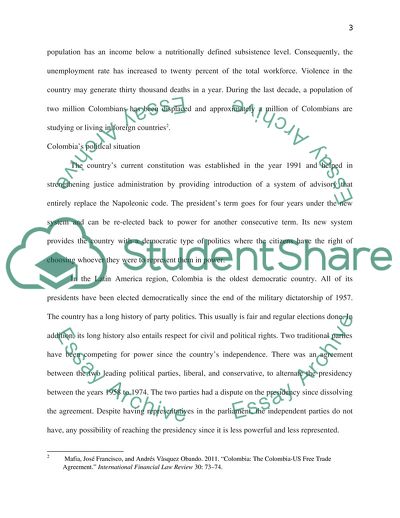Cite this document
(Colombia Political and Economical System Research Paper Example | Topics and Well Written Essays - 1750 words, n.d.)
Colombia Political and Economical System Research Paper Example | Topics and Well Written Essays - 1750 words. https://studentshare.org/politics/1858009-analysis-of-colombia-political-governmental-and-economical-system
Colombia Political and Economical System Research Paper Example | Topics and Well Written Essays - 1750 words. https://studentshare.org/politics/1858009-analysis-of-colombia-political-governmental-and-economical-system
(Colombia Political and Economical System Research Paper Example | Topics and Well Written Essays - 1750 Words)
Colombia Political and Economical System Research Paper Example | Topics and Well Written Essays - 1750 Words. https://studentshare.org/politics/1858009-analysis-of-colombia-political-governmental-and-economical-system.
Colombia Political and Economical System Research Paper Example | Topics and Well Written Essays - 1750 Words. https://studentshare.org/politics/1858009-analysis-of-colombia-political-governmental-and-economical-system.
“Colombia Political and Economical System Research Paper Example | Topics and Well Written Essays - 1750 Words”. https://studentshare.org/politics/1858009-analysis-of-colombia-political-governmental-and-economical-system.


